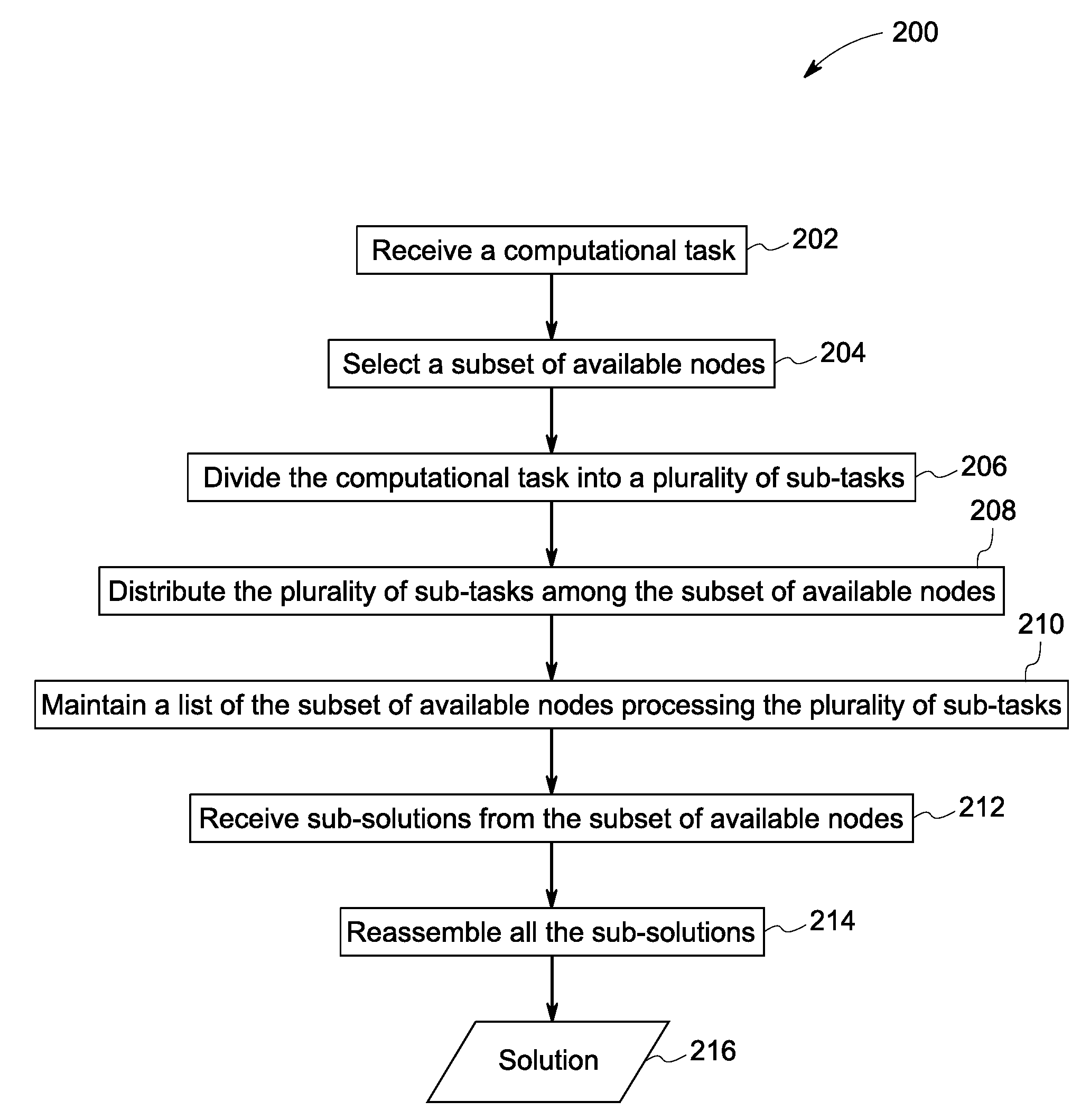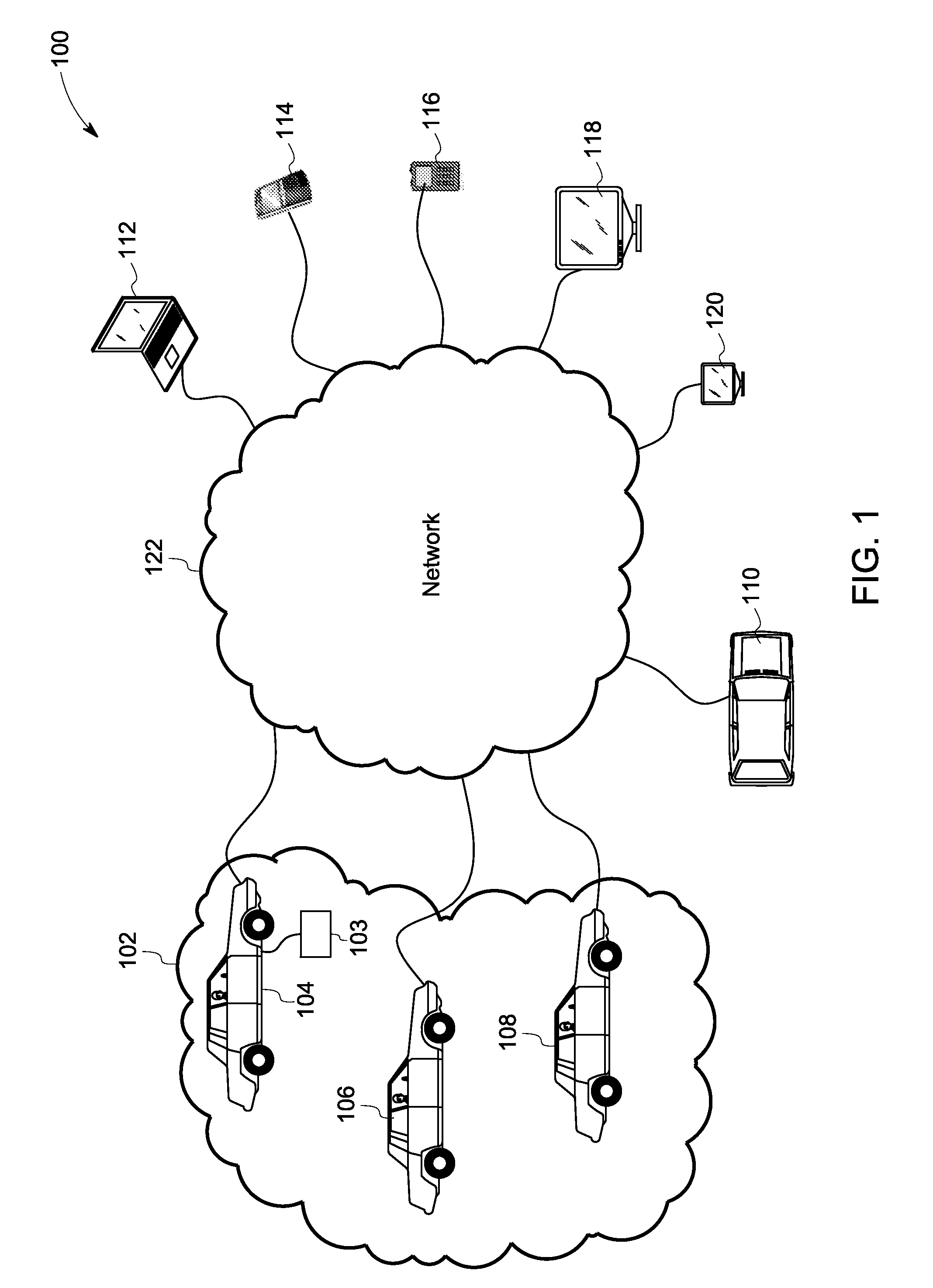Method and system for distributed computation
- Summary
- Abstract
- Description
- Claims
- Application Information
AI Technical Summary
Benefits of technology
Problems solved by technology
Method used
Image
Examples
example
[0045]For illustrative purposes, one non-limiting example is provided to show certain functionality of the present system.
[0046]This example relates to a computational task related to recognition of one or more speakers of an audio file. The audio file is received by a telematics device T1. Accordingly, the telematics device T1 is representative of a base node. In this example, the telematics device T1 is connected to a network having ten other telematics devices including T2, T3, T4, T5, T6, T7, T8, T9, T10, T11. The telematic device T1 after analyzing its processing capabilities and nature of the computational task decides to divide and distribute the computational task among two or more telematics devices. The telematics device T1 then selects a subset of available telematics devices from the telematics devices T1, T2, T3, T4, T5, T6, T7, T8, T9, T10, T11 based upon a present status, processing capability, distance, network throughput, range, resources, features, or combinations ...
PUM
 Login to View More
Login to View More Abstract
Description
Claims
Application Information
 Login to View More
Login to View More - R&D
- Intellectual Property
- Life Sciences
- Materials
- Tech Scout
- Unparalleled Data Quality
- Higher Quality Content
- 60% Fewer Hallucinations
Browse by: Latest US Patents, China's latest patents, Technical Efficacy Thesaurus, Application Domain, Technology Topic, Popular Technical Reports.
© 2025 PatSnap. All rights reserved.Legal|Privacy policy|Modern Slavery Act Transparency Statement|Sitemap|About US| Contact US: help@patsnap.com



